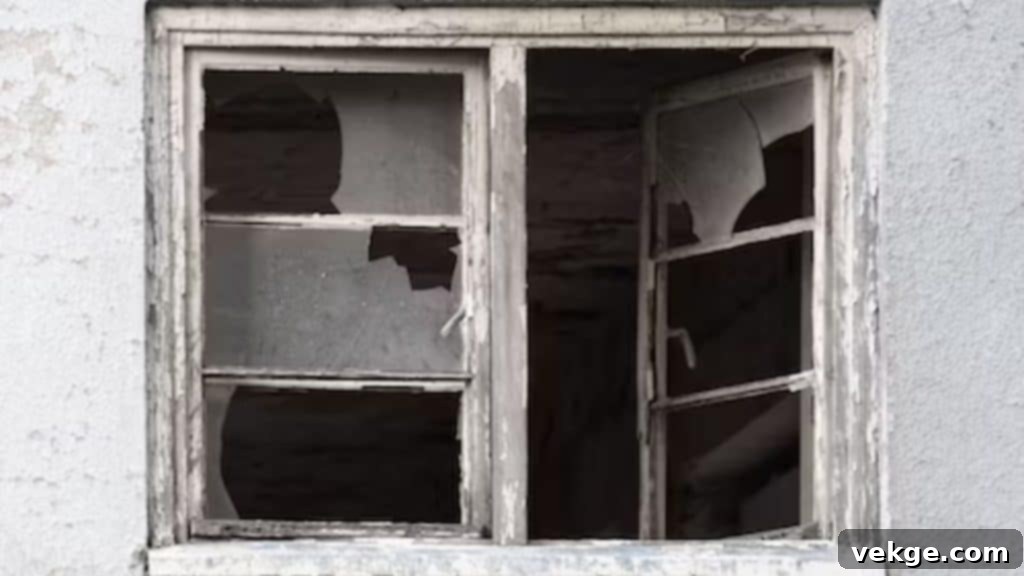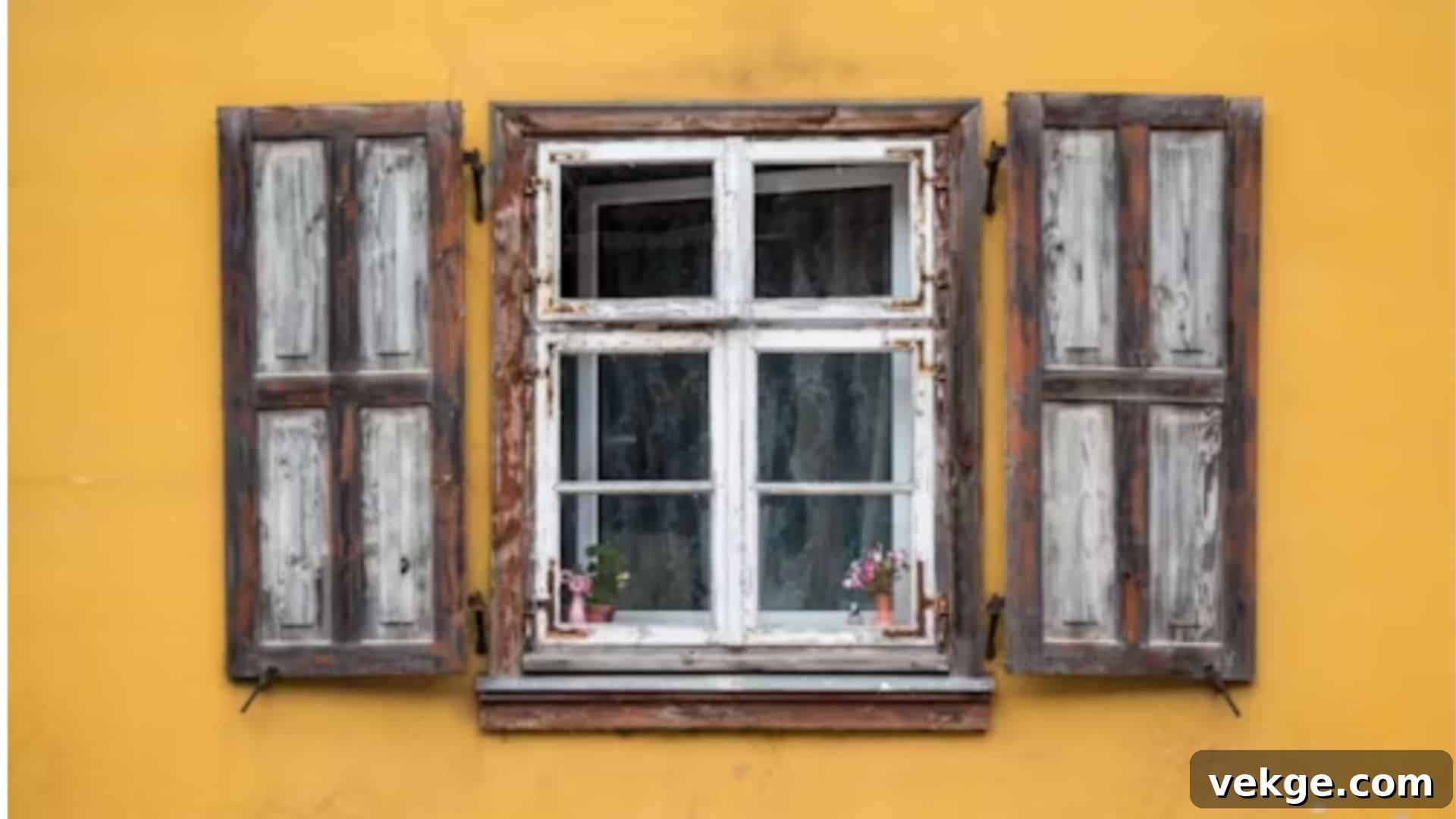Top Signs It’s Time for Window Replacement: Boost Home Efficiency and Comfort
Windows are far more than just transparent openings in your walls; they are vital components of your home’s structural integrity, aesthetic appeal, and overall comfort. Beyond offering picturesque views, they play a critical role in insulating your home, contributing significantly to energy efficiency, and providing a robust barrier against the elements. Well-maintained windows safeguard your interior from harsh weather, reduce outside noise, and help maintain a consistent indoor temperature.
While modern home windows are engineered for durability, even the sturdiest models have a finite lifespan, typically ranging from 15 to 20 years. As windows approach or exceed this age, their performance inevitably declines. Key components like seals begin to weaken, leading to tell-tale signs such as drafts, condensation between panes, and even water seepage. Ignoring these indicators can lead to escalating energy costs, decreased home comfort, and potential damage to your property.
This comprehensive guide delves into five unmistakable signs that signal it’s time to consider upgrading your windows. By understanding these crucial indicators, you can proactively address potential issues, ensuring you continue to enjoy a secure, cozy, and energy-efficient home for years to come. Investing in new windows isn’t just about repair; it’s an investment in your home’s future, enhancing its value, comfort, and sustainability.
5 Clear Signs It’s Time to Invest in Window Replacement

1. Faulty Operation: Difficulty Opening or Closing Windows
One of the most immediate and frustrating signs that your windows are failing is when they become challenging to operate. If you find yourself wrestling with your windows, struggling to open them for fresh air or close them securely, it’s a clear indicator of underlying issues. This problem might stem from simple causes, such as a dirty track filled with debris or worn-out hardware components. In such cases, a thorough cleaning of the tracks or applying a suitable lubricant to the moving parts might offer a temporary solution.
However, if these quick fixes don’t resolve the issue, the problem could be more significant. Over time, exposure to moisture and fluctuating temperatures can cause window frames – especially those made of wood – to warp or rot, making them expand and contract unevenly. Alternatively, subtle shifts in your house’s foundation can throw the entire window alignment off balance. These structural issues not only make windows difficult to use but can also compromise their sealing capabilities, leading to drafts and potential security vulnerabilities.
When the frame is warped, or the hardware is extensively damaged, and simple adjustments or repairs prove ineffective, it’s a strong signal that replacing your windows is the most practical and long-term solution. New windows will ensure smooth, effortless operation, enhancing both the safety and convenience of your home. Modern window designs also offer improved locking mechanisms, boosting your home’s security and your peace of mind.
2. High Utility Bills: Unexplained Increases in Energy Costs
Are your heating and cooling bills steadily climbing without a noticeable change in usage patterns? This significant financial drain is often a primary indicator that your windows are no longer providing adequate insulation for your home. Old, inefficient windows are notorious for being a major source of energy loss, allowing conditioned air (heated in winter, cooled in summer) to escape and unconditioned outside air to infiltrate your living spaces.
Over time, the seals around window panes and frames can deteriorate, crack, or become brittle. This creates small gaps and leaks through which air can freely move. While temporary solutions like weather stripping or caulking can offer some relief, these are often short-lived patches. If your windows are old – especially if they are single-pane – or their frames are compromised, they simply cannot prevent heat transfer effectively. Single-pane windows, for example, offer minimal resistance to temperature changes, making your HVAC system work overtime to maintain comfort.
Upgrading to modern, energy-efficient windows is one of the most impactful home improvements for reducing utility bills. Features like double or triple glazing, inert gas fills (argon or krypton) between panes, Low-E coatings, and well-sealed, insulated frames drastically improve a window’s U-factor and R-value, significantly minimizing heat loss and gain. This investment not only translates into substantial long-term savings on your energy bills but also contributes to a more comfortable, consistently temperate indoor environment throughout the year.
3. Leaky Windows: Persistent Water Infiltration
Discovering water stains on your sills, walls, or flooring around windows is a serious concern that demands immediate attention. Leaky windows are often a sign that the caulking or sealant around the window frame has aged, cracked, or deteriorated, creating openings for water to penetrate. In some cases, cleaning out blocked weep holes – small openings designed to drain water from the window frame – can resolve the issue. However, these are often superficial fixes.
Persistent leaks, even after reapplying caulk or clearing weep holes, suggest a deeper problem with the window’s integrity or fit. The window’s sealant could be failing between the glass panes, or the entire window might no longer fit snugly within its frame. This misalignment can be caused by the window frame warping over time due to continuous exposure to moisture, UV radiation, and temperature fluctuations. Wood frames are particularly susceptible to this, but even vinyl or aluminum frames can be affected by extreme conditions.
If the window frame is warped, achieving a watertight seal becomes incredibly challenging, if not impossible. Continuous water infiltration can lead to severe and costly problems, including:
- Mold and Mildew Growth: A health hazard that can trigger allergies and respiratory issues.
- Wood Rot: Damaging structural components of your home, weakening frames and walls.
- Damaged Interior Finishes: Stains on drywall, peeling paint, and ruined flooring.
- Compromised Insulation: Wet insulation loses its effectiveness, further exacerbating energy loss.
In such scenarios, window replacement is not just an upgrade but a crucial protective measure for your home. New, properly installed windows offer superior sealing and water resistance, safeguarding your property from potential water damage and its associated costs.
4. Audible Outside Noise: Reduced Sound Insulation
If the sounds from the street, your neighbor’s yard, or local traffic are becoming increasingly intrusive inside your house, it’s a clear indication that your windows are no longer effectively insulating against noise. Modern homes aim to be peaceful sanctuaries, and effective sound insulation from windows is a key component of this tranquility. This issue typically arises when the sealing around the window deteriorates, creating gaps through which sound waves can easily travel. Alternatively, the windows themselves might have been poorly insulated from the start, perhaps featuring thin glass or inadequate construction.
While sealing cracks and adding insulating materials around the frame can offer some improvement, these remedies often fall short for significant noise problems. The core issue might lie with the glass itself or the window frame’s design. Old, single-pane windows, for instance, offer very little resistance to sound transmission. Even some double-pane windows might not perform well if they lack specific sound-reducing features.
To truly reclaim your home’s peace and quiet, upgrading to windows with superior sound insulation is essential. Look for features such as:
- Laminated Glass: A layer of plastic (PVB) between two panes of glass that significantly dampens sound.
- Varying Glass Thickness: Using different thicknesses of glass in a double-pane unit can disrupt sound waves more effectively.
- Wider Air Gaps or Gas Fills: A larger space between panes, especially when filled with inert gas like argon, improves both thermal and sound insulation.
- Robust, Well-Sealed Frames: Frames designed to be airtight and structurally sound further reduce noise infiltration.
Investing in better sound-insulating windows can dramatically improve your home environment, fostering a more serene atmosphere conducive to relaxation, work, and sleep. It’s an upgrade that enhances your quality of life within your own home.
5. Visible Damage or Decay: Cracks, Rot, and Condensation
Visual cues of damage or decay are often the most straightforward signs that your windows need attention. These can range from obvious cracks or chips in the glass to peeling paint, rotting wood frames, or even persistent condensation between the glass panes. While minor cracks in the glass can sometimes be repaired, and wooden frames might be treated for superficial rot, these quick fixes are rarely long-term solutions for extensive or recurring damage.
If you notice widespread damage or decay that keeps returning despite repairs, it’s a strong indicator of deeper, ongoing issues. For instance, recurring rot in wooden frames often points to persistent water infiltration that’s not being adequately addressed. Similarly, cracks that reappear or spread might suggest structural stress or continued settling of the house. Condensation trapped between double-pane windows signifies a complete failure of the window’s seal, meaning its insulating gas has escaped, and its energy efficiency is severely compromised.
Ignoring visible damage not only detracts from your home’s aesthetic appeal but can also lead to more significant problems, including:
- Compromised Security: Cracked or decaying frames make windows easier to break into.
- Reduced Energy Efficiency: Damage directly impacts a window’s ability to insulate, leading to higher energy bills.
- Structural Weakness: Rot and decay can spread, weakening the entire window opening and potentially affecting the surrounding wall structure.
- Poor Curb Appeal: Visibly damaged windows can significantly lower your home’s exterior attractiveness and market value.
In these situations, repairing might not be enough or cost-effective in the long run. Replacing the windows becomes the best course of action to prevent further damage to your home, restore its integrity, improve its appearance, and enhance its overall value and performance.
Proactive Window Care: Protecting Your Home and Investment
Your home’s windows are instrumental in maintaining its safety, comfort, and energy performance. They play a critical role in reducing energy bills and ensuring your living space remains consistently comfortable and protected from external elements. By proactively addressing the signs of aging or failing windows, you not only shield your home from potential weather damage and structural issues but also significantly enhance its overall look and market appeal.
Investing in timely window replacement is an intelligent decision that yields multiple benefits. Modern, energy-efficient windows offer superior insulation, leading to noticeable reductions in heating and cooling costs. They provide enhanced security features, better sound dampening, and a fresh, updated aesthetic that boosts your home’s curb appeal and resale value. Don’t wait until problems escalate; recognizing the early signs of window failure allows you to make informed choices that safeguard your most valuable asset.
Key Indicators Your Windows Need Replacement:
- Difficulty Operating: Windows that are consistently difficult to open, close, or lock securely indicate worn hardware, warped frames, or alignment issues that often necessitate replacement for safety and convenience.
- Rising Utility Bills: Steadily increasing heating and cooling costs despite consistent usage are a strong sign that your old windows no longer provide adequate insulation, leading to significant energy loss.
- Persistent Water Leaks: Continuous water leakage around window frames, even after minor repairs, often means the seals are failing or the frame is warped, making new, watertight windows the best solution to prevent costly water damage.
- Increased Outside Noise: If external sounds are becoming increasingly audible inside your home, it indicates a lack of proper sound insulation in your current windows, negatively impacting your home’s tranquility.
- Visible Damage & Decay: Obvious and recurring damage such as rotting frames, extensive cracks in the glass, or permanent condensation between panes signals a breakdown in the window’s integrity and performance, making replacement essential.
